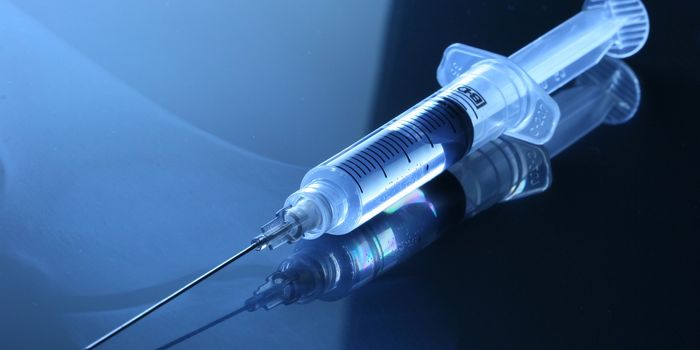New research by market research firm Frost & Sullivan revealed that the increased use of clinical tools such as in vitro tissue analysis, biomarker tests and cancer screening are causing oncologic imaging to shift away from invasive to non- or minimally-invasive methods, which can result in better real-time monitoring of tumors without damaging tissues. The report also indicates that early diagnosis with the help of imaging greatly reduces mortality and costs in cancer treatment.

From an industry perspective, Definiens is seeing a significant increase among pharmaceutical companies in the use of tissue analysis to identify biomarkers and develop diagnostic tests; and while Frost & Sullivan's research illustrates that progress has already been made, tissue data holds promise for significantly more advancement.
Advancements in Screening
From both the patient and industry perspective, the least invasive method possible to properly diagnose a disease, the better. The industry has made tremendous improvements here, and there are some non-invasive methods - such as MelaFind for malignant melanoma - that are very effective. Unfortunately, however, most non-invasive methods at this point are still costly and cumbersome. They are primarily based on imaging methods like MRI, and a single analysis can cost thousands of dollars. Since screening doesn't actually impact the treatment or health of the patient, it should be as inexpensive as possible; it's thus sometimes difficult to justify the high costs of non-invasive imaging as a screening methodology.
In oncology, the gold standard of diagnosis is still the pathologist report on the tumor tissue, and over the last 8 to 10 years this method has become much less invasive for patients. Significant strides have been made in preserving tissue samples and extracting more information out of them; pathologists now only need a small piece of tissue from a biopsy, reducing the need for taking a large sample from a patient. Currently, this less invasive method is often preferable to the non-invasive method of imaging technologies like MRIs, given the lower costs associated and the additional information that it provides about the patient.
Tissue Analysis for Biomarker Testing and Advanced Diagnostics
According to Frost & Sullivan's research, the current need in the industry is to develop more diagnostic tests for early detection and prevention of cancer; however, technical hurdles such as qualifying biomarkers hinder development.
Biomarkers
Developing a sustainable and robust biomarker has been a challenge for the industry. There are very few examples of predictive biomarkers out of tissue, and even fewer out of non-tissue. Only in rare cases are single biomarkers predictive of a response.
However, new technologies are enabling the extraction of all the relevant data out of the tissue so researchers can better identify biomarkers. Pathologists have been trained over decades to identify the features that lead to a diagnosis and compare this to what they've seen in the past. The advantage of image analysis technology is that it can help identify new features in tissue (phenes) and correlate them to clinical outcomes, even if a pathologist has never seen or identified them from the tissue before.
Researchers have realized that there is not a single biomarker that has all the answers.It will therefore be important to correlate all the relevant data that can provide the most holistic and comprehensive picture of a disease for a patient. That means aligning genomic data with tissue data - asking questions such as, if there is a DNA-based biomarker, does it have any consequence on the phene in the tissue? Can it help us understand the biology or morphology of the tumor? This is the direction the industry is headed.
Diagnostics
With advanced tissue analysis and biomarker testing come better diagnostics. There has been a significant increase in interest among pharmaceutical companies to better understand tissue biology and the difference between primary and metastasized tumors. Researchers are working to thoroughly understand the disease and develop prognostic factors at the same time that they are coming up with predictive markers.
With these advancements, the industry can go beyond the basic knowledge that a drug will work for a random, perhaps 10 percent of patients. Robust diagnostics can identify whether a patient has predominant features that might cause them to not respond, or which therapies might be a threat to their health. They provide an intersection to evaluate and determine which kind of treatment should be administered first, and what should be withheld. Rather than resorting to trial and error, clinicians can rely on hard facts, and administer the best drug candidate for the patient the first time around. Better diagnostics put pharmaceutical companies and physicians in a position to fight for the best thing for the patient.
The Road to Success
The increased use of in vitro tissue analysis is supporting biomarker testing and advanced diagnostics, which in turn is enabling less invasive and less costly oncologic imaging procedures, earlier detection, and ultimately, more successful treatment programs. The ability to do more, and better, analysis with less tissue is very important. However, there is still work to be done. The timeline for bringing innovation to the regular routine daily practice is usually a long one.
The Frost & Sullivan report noted that public-private partnerships have enormous potential to increase research investments and maximize technology growth. This is increasingly becoming the key to success. Partnerships between universities, research institutes, pharmaceutical companies and small enterprises will bring success to all involved. Such partnerships help elevate the most fruitful ideas and facilitate the sharing of knowledge and finances, enabling researchers to develop diagnostics and drugs more quickly.
In the near future, patients will have the ability to understand the heterogeneity of their own individual disease and make a treatment decision with their doctors based on that, versus relying on treatment methods that may or may not work for them - all without the need for invasive and costly screening methods.
By Ralf Huss, MD, Chief Medical Officer, Definiens










